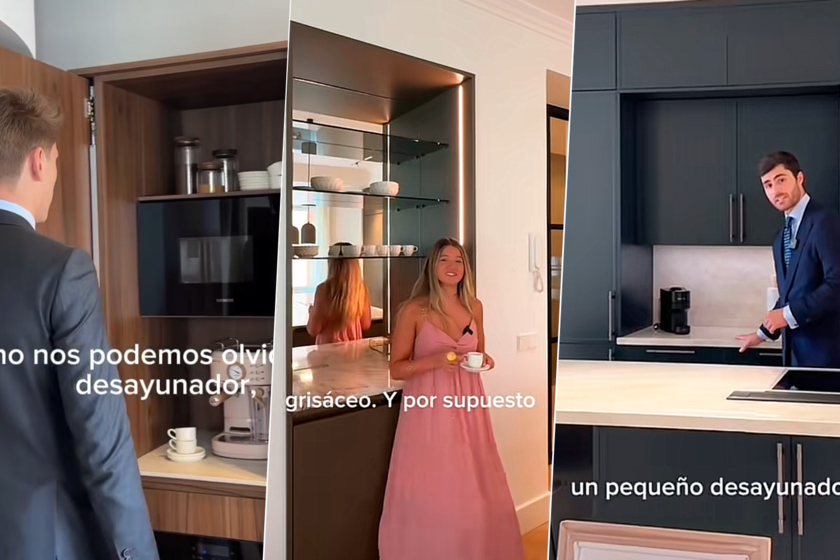We are thousands who have gone through an operating room to undergo Lasik surgery to correct the vision problem and say goodbye to the glasses definitively. And although this is very safe and very common surgery in the day -to -day life of many ophthalmologists, it is still a surgery that is literally “carving” the cornea. Now a research team proposes a radical alternative: correcting vision without lasers, without cuts and in approximately a minute.
A new tennic one that already has a name. Through the Autumn Meeting of the American Chemical Society (ACS), the researchers presented a technique to remodel the cornea, a small electric current and a kind of platinum lens to remodel the fabric in a precise and less invasive way will be used. This is what they have called electromechanical remodeling (EMR).
The ‘Kit of the matter’ lies in the cornea. To understand innovation, you must first know that the cornea is the transparent ‘dome’ that we find in the front of the eye. Its function is to focus the light on the retina where the cones and canes that are responsible for interpreting the shapes or colors are found.
If the shape of this cornea is not perfect, the image that reaches the brain is blurred, giving a pathology that we can know as myopia, farsightedness or astigmatism. This means that when we want to operate to eliminate these pathologies, the state and thickness of the cornea have to be analyzed.
The problem of lasik: “carving” the eye. Lasik surgery corrects this using a laser to eliminate or “carve” microscopic portions of corneal tissue and give it the proper shape. As Michael Hill, professor of chemistry at the western College and one of the authors of the study, explains, “LASIK is just an elegant way to do traditional surgery. It is still tissue carving, only with a laser.”
In this way, the elimination of a fabric that will never recover is highlighted as a negative point of this surgery. In addition, it also conditions surgery a lot to have an adequate cornea thickness so that the surgeon can eliminate enough tissue to achieve a good result. And in some people the cornea is really fine.
Having this problem in front, the objective of research equipment was clear: mold the fabric instead of eliminating it.
Chemistry to make the malleable cornea. The key to this new technique lies in the composition of the cornea. This fabric, rich in collagen, maintains its shape thanks to a network of ionic links between components with opposite loads. The research team, led by Hill and the surgeon Brian Wong of the University of California, discovered that they could “temporarily loosen” this network. Although it was a result they saw almost by accident.

The process to get a malleable cornea. To understand how they can do it in a simple way, we will divide the process into the following points:
- Everything begins by applying a small electrical potential on corneal tissue through an electrode.
- This current causes the electrolysis of the water present in the tissue, which reduces the pH of the tissue to make it more acidic.
- This acidity neutralizes the negative loads within the collagen matrix, weakening the links that rigidly keep the cornea, so it will temporarily be malleable to give it the way you want.
- Once the electric current is removed, the pH returns to its physiological state and the ionic bonds network is restored, causing the cornea to be ‘rigid’ again.
Correcting myopia in 10 minutes. To prove their theory, they created some platinum “lenses” that served as a mold with the form of corrected cornea. They placed these in twelve rabbit ocular balloons ex living (that is, they were removed from the animal) and that they were submerged in saline solution to simulate tears.
In the 10 eyes that simulated myopia, the result was a success. After applying the electric current for approximately one minute, the cornea curvature adapted perfectly to the shape of the platinum lentilla, correcting the refractive defect. All this at the same time as Lasik technique lasts, but with less steps, a cheaper team and without having to make an incision.
A promising future, but with obstacles. Although the theory has worked in these eyes, there is still many steps to take. The fact that a treatment of this caliber reaches a patient is a process that can take many years. At the moment, the next step is to move on to the experimentation in animals, including mice that are alive, in order to evaluate the safety of the procedure.
Subsequently, and after the approval of the FDA, you can go through the rehearsals in humans on its different scales. In this way, we can go to the next decade before seeing it announce as a valid treatment. Although they also have the financing of the project that is in the air right now.
Other uses are also explored. In addition to being a suitable treatment for myopia, farsightedness or astigmatism, the technique could have other applications. One of them is the ability of surgery to reverse certain types of corneal opacity that are caused by exposure to chemicals. This is something that could only be treated with a complete cornea transplant.
Aesthetic surgeries are the order of the day. The fact of withdrawing the glasses is much for aesthetic and comfort reasons, something that is the order of the day. We have already seen how there are people capable of breaking their bones for having a few centimeters tall or how surgery is popularized to make an eye change. But it is not something now, since 2,000 years ago the Romans themselves did these surgeries to change the physicist.
Imágenes | Olga guryanova
In WorldOfSoftware | The patient who has survived 12 different tumors and hides the “holy grail” of the fight against cancer












